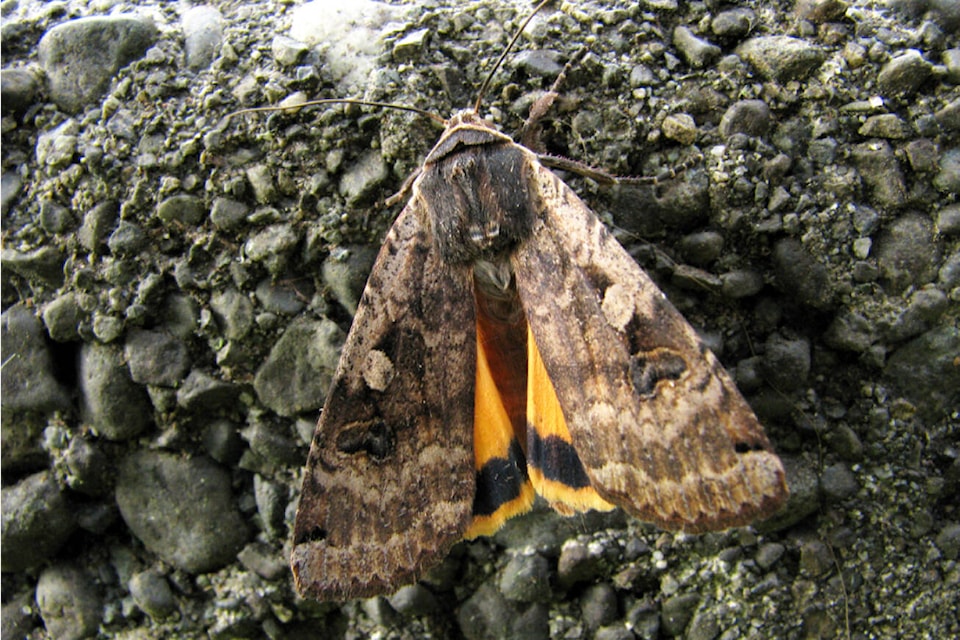Leslie Cox
Special to the Record
Two discoveries of moths in the garden this past week sent me for my reference books. I wanted to be sure these were both bad guys before I did something drastic to them.
Turns out, they were both underwing moths and they are most definitely bad guys.
However, the forewing colour on the first one was a pale tan colour and its underwing colour was yellow with a black band on the bottom edge. This colouring leads to its common name – the lesser yellow underwing moth.
The forewing colour on the second moth was a dark brown and its underwing colour was orange with the black band on the bottom edge. Its common name is the large yellow underwing moth; sometimes referred to as the greater yellow underwing. (Don’t ask me why it is labeled “yellow” when the underwing colour is definitely orange.)
The bad part about these two moths is their larvae are the dreaded cutworms. You know. Those dastardly ones that cut the tops off your newly sprouted beans and a whole host of other young seedlings.
Would you believe both of these underwing moth species are not native to Canada or even North America?
The first confirmed sighting of the lesser yellow underwing moth was made in Vancouver, B.C. in 1982 and has slowly expanded its range south where confirmed sightings were made in Oregon in 2000.
The large yellow underwing was found in Nova Scotia in 1979 first and then seen in Maine, USA in 1985. It gradually expanded its range south and west… New York and Maryland in 1992, North Carolina in 1997, Colorado in 1999, California in 2001, British Columbia in 2002, Alaska in 2005.
I cannot figure out how this Large Yellow Underwing moth skipped from California to B.C. before a single moth was identified in Oregon in 2021. And nowhere could I find any mention of when this moth took up residence in Washington state but apparently it has. One reference stated the large yellow underwing covers the entire Pacific Northwest, as of 2011, with the exception of high elevations in the Coastal Mountains of B.C.
I also wonder at its delayed western migration across Canada from Nova Scotia because it was only identified in Ontario in 2017. Perhaps the Quebec winters are too cold for this insect… but that is just a guess.
Speaking of winters… this is the time in the large yellow underwing’s life cycle when the larvae hibernate underground. On mild nights when temperatures stay above 4.5 C, it is not unusual for this stout caterpillar to stick its head above ground for a quick midnight snack. Big reason why another name for this underwing species is winter cutworm.
Come spring, the larvae begin their pupation cycle in the soil and emerge as adult moths in late June or early July. Egg laying - several hundred of them - begins in late August through September and the young larvae emerge in two to four weeks. Thankfully, there is only one generation a year.
But not so with the lesser yellow underwing moth. It seems there are reports throughout the Pacific Northwest of the nocturnal adults being active from mid-June to October, which infers there may be multiple broods, according to pnwmoths.biol.wwu.edu.
But wait! Not all moths are bad. A recent garden visitor sent me a photo of her garden find: a striking green caterpillar. Details on its ID will be in my next column.
Moths are one of the most diverse and successful organisms so it is fitting they are honoured with an annual National Moth Week. (nationalmothweek.org) Count on!
~ ~ ~ ~ ~
Our garden is still open from Thursday to Sunday!
Leslie Cox co-owns Growing Concern Cottage Garden in Black Creek. Her website is at www.duchessofdirt.ca
